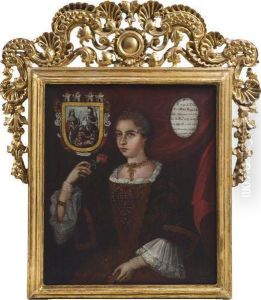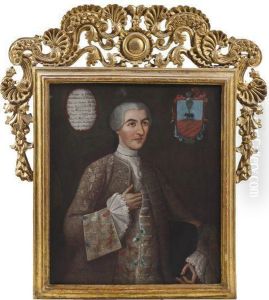Juan Joseph De Medina Paintings
Juan Joseph de Medina was a significant figure in the realm of Spanish Baroque art, born in 1688 in Medina de Rioseco, Valladolid, Spain. His life and career were relatively brief, as he died at the young age of 39 in 1727, but his impact on the Spanish art scene of the early 18th century was profound. Medina was known for his religious paintings, which were deeply influenced by the dramatic style and emotional intensity characteristic of the Baroque period.
Medina's artistic journey began in his hometown, but it was in Seville where his talent truly flourished. He moved there to study and quickly became part of the vibrant artistic community, absorbing influences from contemporaries and predecessors alike. His work was particularly influenced by the likes of Murillo, a leading figure in Spanish Baroque art, whose influence can be seen in Medina's tender treatment of religious subjects and his soft, luminous approach to light.
Despite the brevity of his career, Medina was prolific. He created a significant number of religious works for churches and convents throughout Seville and its surrounding areas. His paintings are characterized by their emotional depth, the realism and expressiveness of the figures, and the effective use of chiaroscuro to enhance the dramatic effect of his scenes. Medina's art reflects the spiritual fervor of the Counter-Reformation, aiming to inspire devotion and religious fervor among its viewers.
Juan Joseph de Medina's legacy is that of a talented artist who contributed significantly to the development of Baroque painting in Spain. While he may not be as widely recognized as some of his contemporaries, his work is a testament to the rich cultural and artistic milieu of early 18th-century Seville. Today, his paintings can be found in various churches, collections, and museums, where they continue to be appreciated for their beauty and emotional power.

